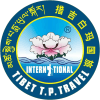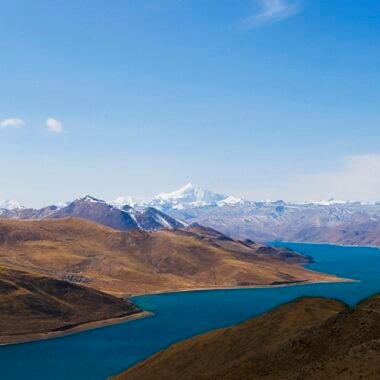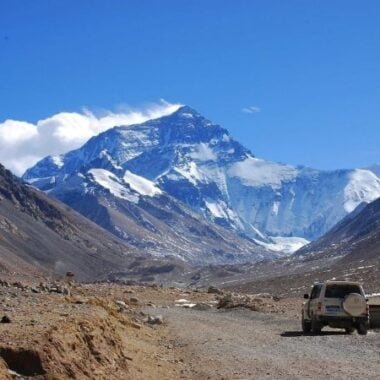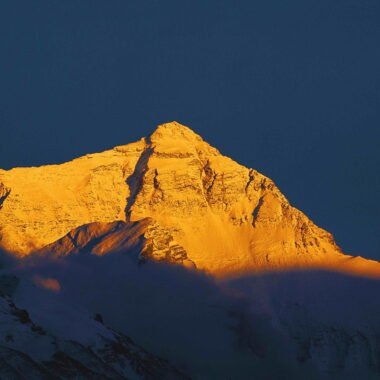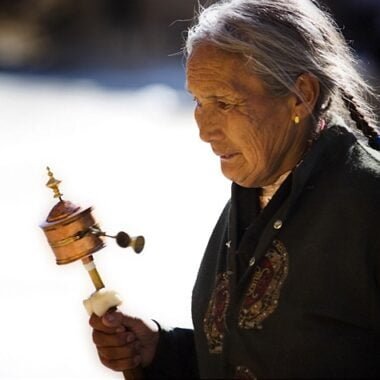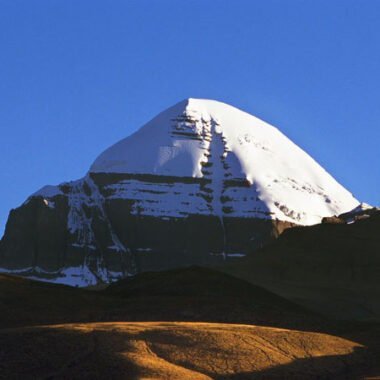Tibet Through the Seasons: A Visual Journey from Blossoms to Snowscapes
Tibet’s landscapes are a chameleon, shifting dramatically with the seasons. From the blush of spring meadows to the stark majesty of winter…
Tibet’s landscapes are a chameleon, shifting dramatically with the seasons. From the blush of spring meadows to the stark majesty of winter peaks, each month paints a new masterpiece. Whether you’re chasing alpine blooms or star-filled skies, this guide will help you time your visit to witness Tibet’s most magical moments.
Spring in Tibet (April–June): Awakening of the High Plateau
Landscape Palette:
– Mountains: Snow begins melting, revealing charcoal ridges streaked with white. The lower valleys (like Nyingchi) explode with pink and white wild peach blossoms, framed by towering, snow-capped peaks.
– Grasslands: Yak herds return to graze on emerald-green meadows dotted with blue Himalayan poppies and yellow rhododendrons.
– Skies: Cotton-like clouds drift across deep blue skies, perfect for photography.
Iconic Experiences:
– Trek the Barkhor Circuit in Lhasa amid mild 10–15°C days.
– Photograph Yarlung Tsangpo River flanked by blooming apricot trees.
Travel Tip:
– Pack layers—mornings are chilly (0–5°C), but midday sun warms quickly.
Summer in Tibet (July–August): Lakes Alive with Color
Landscape Palette:
– Lakes: Lake Namtso turns vivid turquoise, mirroring cumulus clouds. Yamdrok Lake shimmers with sapphire hues as sunlight pierces the thin air.
– Pastures: The Changtang Plateau becomes a carpet of purple astragalus flowers, swarming with migratory birds.
– Glaciers: Summer rains polish Mount Nojin Kangsang’s ice walls to a glassy shine.
Iconic Experiences:
– Camp under starry skies at Lake Manasarovar during the Saga Dawa Festival.
– Spot rainbows arching over Ganden Monastery after afternoon showers.
Travel Tip:
– Avoid lower valleys in July (monsoon mudslides). Focus on high-altitude lakes!
Autumn in Tibet (September–October): Golden Symphony
Landscape Palette:
– Forests: Reting Valley erupts in gold as poplar and birch leaves glow against crimson monasteries.
– Farmlands: Terraced barley fields near Shigatse turn amber, with farmers harvesting under crisp skies.
– Mountains: Everest (Qomolangma) reveals its pyramid peak, unobscured by clouds.
Iconic Experiences:
– Drive the Friendship Highway through fiery red and orange valleys.
– Capture pilgrims circling Mount Kailash under a harvest moon.
Travel Tip:
– Nights turn cold (-5°C in October), bring a -10°C sleeping bag for camping.
Winter in Tibet (November–March): Stark Serenity
Landscape Palette:
– Skies: The dry air creates crystalline clarity. Everest’s summit glows rose-pink at sunrise, visible from 100km away.
– Lakes: Lake Puma Yumco freezes into crackled turquoise ice, surrounded by snow-dusted dunes.
– Monasteries: Red-robed monks contrast starkly against whitewashed walls and snowdrifts at Sera Monastery.
Iconic Experiences:
– Soak in Yangpachen Hot Springs surrounded by steam and snow.
– Witness Tibetan New Year (Losar) celebrations with butter lamp displays.
Travel Tip:
– Roads to remote areas (e.g., Mount Kailash) close November–April.
Seasonal Comparison Chart
Season | Avg. Temp (°C) | Crowds | Key Highlights |
Spring | 5°C to 20°C | Low | Blossoms, clear skies |
Summer | 10°C to 25°C | High | Turquoise lakes, festivals |
Autumn | 0°C to 15°C | Medium | Golden foliage, Everest and Valley views |
Winter | -10°C to 10°C | Low | Empty trails, vivid sunrises |
Your Season, Your Tibet
– Adventurers: Spring and Autumn for trekking without summer rains.
– Photographers: Winter for unparalleled mountain clarity.
– Culture Lovers: Summer for vibrant festivals.
Let Tibet’s seasons guide your journey—every month whispers a different secret.
Relevant Articles:
- The Ultimate Tibet Packing List: Gear Up for Everest, Lake Namtso & Beyond
- Best Photography Spots in Tibet – Top Scenic Locations for Photographers
- Why Winter is a Good Time to Visit Tibet: Benefits & Travel Tips
- Introduction to Top Tibet Tourist Attractions: the Best of Tibet’s Sacred Sites & Natural Wonders
- Tibet’s Major Festivals in 2025: Dates, Celebrations, and Cultural Insights
- Weather of Tibet:A Guide for Travelers to Tibet
